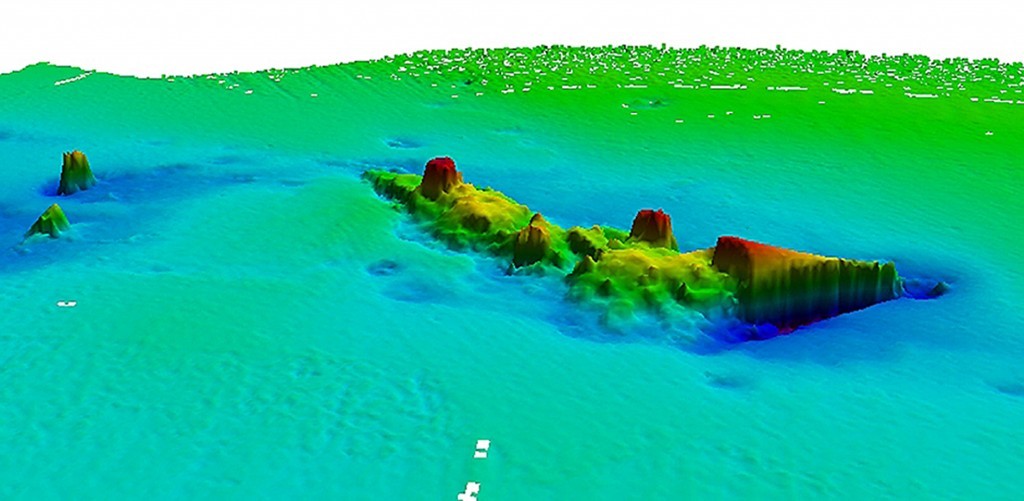
The wreckage of a sunken oil rig support boat was found during a bid map the dozens of sunken ships sunk in the Battle of Jutland.
The ship was believed to have to have sunk following a fire in the 1980s.
The scans of ships destroyed in the Battle of Jutland 99 years ago have been made for the first time using 21st Century technology.
The Royal Navy’s survey ship HMS Echo has created the colourful three-dimensional images of HMS Invincible which was one of 25 ships – 14 British – which were blown up in just one day of the First World War on May 31 1916, off the coast of Denmark.
Ahead of the battle’s centenary next spring – which will form the focal point of the Royal Navy’s Great War commemorations – HMS Echo spent a week scouring the floor of the North Sea with its state-of-the-art sonar suite.
Nick Hewitt, a historian with the National Museum of the Royal Navy who was on board HMS Echo for the work at Jutland, said the week surveying the battlefield of 1916 had helped to “build a picture of one of the greatest naval battles in history”.
He said: “The condition of the wrecks varies enormously. Some have suffered badly from post-war attempts to salvage them, but others are astonishingly intact.
“HMS Defence in particular was ’reduced to atoms’ according to one contemporary account, but the wreck was complete, upright and immediately recognisable by the distinctive profile of her secondary armament, still trained outboard towards her foes a century after the battle.”
During the Battle of Jutland 250 warships from the British and German navies clashed from the afternoon of May 31 1916 until the small hours of the following morning.
When it was over, 25 ships were at the bottom of the North Sea and more than 8,500 men were dead, three quarters of them Britons.
More than 1,000 of those Royal Navy dead were killed when battle-cruiser Invincible was torn apart by a German shell which plunged through the roof of Q turret.
The resulting fire detonated her magazines. A dozen miles from the wreck of the Invincible HMS Echo also surveyed the remains of cruiser HMS Defence – with its bow now separate from its hull, and the wreck of HMS Queen Mary which suffered the same fate as Invincible.
Echo visited 21 of the 25 sites where Jutland wrecks are believed to be – based on previous expeditions, eyewitness accounts and contemporary charts – and found nine hulls positively identified as vessels lost in the battle.
T
At the end of the wreck surveying, the 40-strong ship’s company held a service of remembrance before casting a wreath into the North Sea in memory of the British and German dead.
Commander Phillip Newell, commanding officer of HMS Echo, said: “The week has been a poignant reminder of the sacrifices the Royal Navy made in protecting our nation during World War One.
“The loss of nearly 10,000 sailors over two days seems unbelievable today, and I’m very humbled to have surveyed the wrecks of both British and German warships where so many men lost their lives.”
All the data will be provided to the UK Hydrographic Office in Taunton to allow them to update maritime charts used by most of the world’s seafarers.